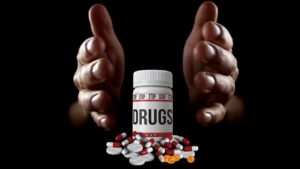संयोजन दवाएँ क्या हैं; उनमें से 156 पर प्रतिबंध क्यों लगाया गया है? सरकार ने 156 फिक्स्ड-डोज़ कॉम्बिनेशन (FDC) दवाओं पर प्रतिबंध लगा दिया है, जिनमें चेस्टन कोल्ड और फ़ोरसेट जैसी लोकप्रिय दवाएँ शामिल हैं, जिनका इस्तेमाल क्रमशः सर्दी, बुखार और दर्द के लिए किया जाता है।
यह प्रतिबंध FDC पर सबसे व्यापक कार्रवाई है – जो एकल खुराक के रूप में दो या अधिक ज्ञात दवाओं का संयोजन है – 2018 के बाद से, जब 328 ऐसी दवाओं पर प्रतिबंध लगाया गया था। अधिकारियों ने कहा कि 2014 से कुल 499 FDC पर प्रतिबंध लगाया गया है।

पिछले सप्ताह जारी अपनी अधिसूचना में, केंद्र सरकार ने इन FDC को तर्कहीन करार दिया और कहा कि इनका कोई चिकित्सीय लाभ नहीं है।
FDC क्या हैं; वे किसकी मदद करते हैं?
FDC ऐसी दवाएँ हैं जिनमें एक से अधिक सक्रिय तत्व होते हैं – दवाओं में रासायनिक यौगिक जो शरीर पर प्रभाव डालते हैं – एक ही गोली, कैप्सूल या शॉट में। FDC तपेदिक और मधुमेह जैसी स्थितियों वाले रोगियों के लिए हैं, जिनके लिए उन्हें नियमित रूप से कई दवाएँ लेने की आवश्यकता होती है। एफडीसी रोगी को प्रतिदिन लेने वाली गोलियों की संख्या कम कर देते हैं, तथा उपचार के पालन में सुधार करने में सहायता करते हैं।
कभी-कभी, हालांकि, एफडीसी का अर्थ यह हो सकता है कि रोगी ऐसी दवा ले लेता है जिसकी उसे आवश्यकता नहीं होती। उदाहरण के लिए, चेस्टन कोल्ड में बुखार के लिए पैरासिटामोल, एलर्जी से राहत के लिए सेटिरिज़िन तथा नाक की भीड़भाड़ को कम करने के लिए फिनाइलफ्राइन होता है।
कौन सी एफडीसी प्रतिबंधित की गई हैं?
प्रतिबंधित दवाओं में शामिल हैं:
गैस्ट्रोइंटेस्टाइनल समस्याओं के उपचार के लिए उपयोग में लाए जाने वाले विभिन्न एंजाइमों के संयोजन।
नाक की भीड़भाड़ को कम करने वाली दवाइयों, बलगम को तोड़ने वाले सिरप तथा पैरासिटामोल के साथ लेवोसेटिरिज़िन जैसी एंटी-एलर्जिक दवाओं का संयोजन
त्वचा की स्थितियों के उपचार के लिए उपयोग किए जाने वाले संयोजन, जिसमें एलोवेरा के साथ मेन्थॉल; औषधीय साबुन के रूप में विटामिन ई के साथ एलोवेरा; सिल्वर सल्फाडियाज़ीन (जलने पर इस्तेमाल किया जाता है) एक एंटीसेप्टिक एजेंट, एलो एक्सट्रैक्ट और विटामिन के साथ; एलो और एक प्राकृतिक पदार्थ (त्वचा की जलन के लिए) के साथ कैलामाइन लोशन
मतली को रोकने के लिए माइग्रेन की दवा के साथ संयोजन
मासिक धर्म में ऐंठन के लिए इस्तेमाल की जाने वाली दवा मेफेनामिक एसिड का संयोजन – एंटी-फाइब्रोटिक दवा ट्रैनेक्सैमिक एसिड के साथ
स्तंभन दोष की दवा वियाग्रा में सक्रिय घटक सिल्डेनाफिल का संयोजन, एक ऐसी दवा के साथ जो रक्त वाहिकाओं और मांसपेशियों को आराम देती है।
LIST OF DRUGS PROHIBITED FOR MANUFACTURE AND SALE THROUGH GAZETTE NOTIFICATIONS UNDER SECTION 26A OF DRUGS & COSMETICS ACT, 1940 BY THE MINISTRY OF HEALTH AND FAMILY WELFARE, GOVT. OF INDIA
- Amidopyrine.
- Fixed dose combinations of vitamins with anti-inflammatory agents and tranquilizers.
- Fixed dose combinations of Atropine in Analgesics and Antipyretics.
- Fixed dose combinations of Strychnine and Caffeine in tonics.
- Fixed dose combinations of Yohimbine and Strychnine with Testosterone and Vitamins.
- Fixed dose combinations of Iron with Strychnine, Arsenic and Yohimbine.
- Fixed dose combinations of Sodium Bromide/Chloral Hydrate with other drugs.
- Phenacetin.
- Fixed dose combinations of antihistaminic with anti-diarrhoeals.
- Fixed dose combinations of Penicillin with Sulphonamides.
- Fixed dose combinations of Vitamins with Analgesics.
- Fixed dose combinations of any other Tetracycline with Vitamin C.
- Fixed dose combinations of Hydroxyquinoline group of drugs with any other drug except for preparations meant for external use.
- Fixed dose combinations of Corticosteroids with any other drug for internal use.
- Fixed dose combinations of Chloramphenicol with any other drug for internal use.
- Fixed dose combinations of crude Ergot preparations except those containing Ergotamine, Caffeine, analgesics, antihistamines for the treatment of migraine, headaches.
- Fixed dose combinations of Vitamins with Anti TB drugs except combination of Isoniazid with Pyridoxine Hydrochloride (Vitamin B6).
- Penicillin skin/eye Ointment.
- Tetracycline Liquid Oral preparations.
- Nialamide.
- Practolol.
- Methapyrilene, its salts.
- Methaqualone.
- Oxytetracycline Liquid Oral preparations.
- Demeclocycline Liquid Oral preparations.
- Combination of anabolic Steroids with other drugs.
- Fixed dose combination of Oestrogen and Progestin (other than oral contraceptive) containing per tablet estrogen content of more than 50 mcg (equivalent to Ethinyl Estradiol) and progestin content of more than 3 mg (equivalent to Norethisterone Acetate) and all fixed dose combination injectable preparations containing synthetic Oestrogen and Progesterone. (Subs. By Noti. No. 743 (E) dt 10-08-1989).
- Fixed dose combination of Sedatives/ hypnotics/anxiolytics with analgesics-antipyretics.
- Fixed dose combination of Rifampicin, isoniazid and Pyrazinamide, except those which provide daily adult dose given below:
Drugs Minimum Maximum Rifampicin 450 mg 600 mg Isoniazid 300 mg 400 mg Pyrazinamide 1000mg 1500 mg
- Fixed dose combination of Histamine H-2 receptor antagonists with antacids except for those combinations approved by Drugs Controller, India.
- The patent and proprietary medicines of fixed dose combinations of essential oils with alcohol having percentage higher than 20% proof except preparations given in the Indian Pharmacopoeia.
- All Pharmaceutical preparations containing Chloroform exceeding 0.5% w/w or v/v whichever is appropriate.
- Fixed dose combination of Ethambutol with INH other than the following: INH
Ethambutol 200 mg. 600 mg. 300 mg. 800 mg. - Fixed dose combination containing more than one antihistamine.
- Fixed dose combination of any anthelmintic with cathartic/purgative except for piperazine/ Santonin.
- Fixed dose combination of Salbutamol or any other drug having primarily bronchodilatory activity with centrally acting anti-tussive and/or antihistamine.
- Fixed dose combination of laxatives and/or anti-spasmodic drugs in enzyme preparations.
- Fixed dose combination of Metoclopramide with systemically absorbed drugs except fixed dose combination of metoclopramide with aspirin/paracetamol.
- Fixed dose combination of centrally acting, antitussive with antihistamine, having high atropine like activity in expectorants.
- Preparations claiming to combat cough associated with asthma containing centrally acting antitussive and/ or an antihistamine.
- Liquid oral tonic preparations containing glycerophosphates and/or other phosphates and / or central nervous system stimulant and such preparations containing alcohol more than 20% proof.
- Fixed dose combination containing Pectin and/or Kaolin with any drug which is systemically absorbed from GI tract except for combinations of Pectin and/or Kaolin with drugs not systemically absorbed.
- Chloral Hydrate as a drug.
- Dovers Powder I.P.
- Dover’s Powder Tablets I.P.
- Antidiarrhoeal formulations containing Kaolin or Pectin or Attapulgite or Activated Charcoal.
- Antidiarrhoeal formulations containing Phthalyl Sulphathiazole or Sulphaguanidine or Succinyl Sulphathiazole.
- Antidiarrhoeal formulations containing Neomycin or Streptomycin or Dihydrostreptomycin including their respective salts or esters.
- Liquid Oral antidiarrhoeals or any other dosage form for pediatric use containing Diphenoxylate Loperamide or Atropine or Belladona including their salts or esters or metabolites Hyoscyamine or their extracts or their alkaloids.
- Liquid Oral antidiarrhoeals or any other dosage form for pediatric use containing halogenated hydroxyquinolines.
- Fixed dose combination of antidiarrhoeals with electrolytes.
- Patent and Proprietary Oral Rehydration Salts other than those conforming to the follwoing parameters:
- Patent and Proprietary Oral Rehydration Salts on reconstitution to one litre shall contain:-
Sodium- 50 to 90 millimoles.
Total osmolarity – 240-290 millimoles.
Dextrose: Sodium molar ratio-Not less than 1 : 1 and not more than 3 : 1. - Patent and Proprietary cereal based Oral Rehydration Salts on reconstitution to one litre shall contain:-
Sodium-50 to 90 millimoles.
Total osmolarity-Not more than 290 milliosmoles.
Precooked rice-Equivalent to not less than 50 gms and not more than 80 gms as total replacement of Dextrose. - Patent and Proprietary Oral Rehydration Salts (ORS) may contain parameters specified above and labeled with the indication for “Adult Choleratic Diarrhoea only”.
- Patent and Proprietary Oral Rehydration Salts shall not contain Mono or Polysaccharides or saccharine sweetening agent.
- Patent and Proprietary Oral Rehydration Salts on reconstitution to one litre shall contain:-
- Fixed dose combination of Oxyphenbutazone or Phenylbutazone with any other drug.
- Fixed dose combination of Analgin with any other drug.
- Fixed dose combination of dextropropoxyphene with any other drug other than anti-spasmodic and/or non-steriodal anti-inflammatory drugs (NSAIDS).
- Fixed dose combination of a drug, standards of which are prescribed in the Second Schedule to the said Act with an Ayurvedic, Siddha or Unani drug.
- Mepacrine Hydrochloride (Quinacrine and its salts) in any dosage form for use for female sterilization or contraception.
- Fenfluramine and Dexfenfluramine.
- Fixed dose combination of Diazepam and Diphenhydramine Hydrochloride .
- Rimonabant.
- Rosiglitazone.
- Nimesulide formulations for human use in children below 12 years of age.
- Cisapride and its formulations for human use.
- Phenylpropanolamine and its formulation for human use.
- (*)Human Placental Extract and its formulations for human use.
- Sibutramine and its formulations for human use, and
- R-Sibutramine and its formulations for human use.
- Gatifloxacin formulations for systemic use in humans by any route including oral and injectable,
- Tegaserod and its formulations for human use.
*Prohibition revoked vide Gazette Notification GSR No. 418(E) dated 30 May 2011.
संयोजन दवाएँ क्या हैं अधिक जानकारी के लिए यहां क्लिक करें
LIST OF DRUGS PROHIBITED FOR IMPORT
- Nialamide
- Practolol
- Amidopyrine
- Phenacetin
- Methapyrilene and its salts
- Methaqualone
- Chloral Hydrate as a drug
- Mepacrine Hydrochloride (Quinacrine and its Salts) in any dosage form for use for female sterilization or contraception.
- Fenfluramine and Dexfenfluramine
- Rimonabant
संयोजन दवाओं का नुकसान
संयोगी औषधियाँ, जिन्हें हम आमतौर पर संयोजन दवाएं कहते हैं, वे दवाएं हैं जिनमें दो या अधिक सक्रिय तत्व होते हैं। ये दवाएं विशेषकर उन रोगों के उपचार के लिए बनाई जाती हैं, जो एक से अधिक कारकों या लक्षणों से प्रभावित होते हैं। हालांकि, इनका उपयोग कई लाभ प्रदान कर सकता है, लेकिन इनके कुछ गंभीर नुकसान भी होते हैं, जिन्हें अनदेखा नहीं किया जा सकता।सबसे पहले, संयोगी औषधियों का उपयोग रोगियों के लिए दवा के प्रभाव को समझना कठिन बना सकता है। जब एक से अधिक सक्रिय तत्व होते हैं, तो यह निर्धारित करना मुश्किल हो जाता है कि कौन सी दवा किस लक्षण को प्रभावी ढंग से नियंत्रित कर रही है। उदाहरण के लिए, यदि कोई व्यक्ति एक संयोजन दवा ले रहा है और उसे दुष्प्रभाव अनुभव होता है, तो यह पता लगाना चुनौतीपूर्ण हो सकता है कि यह दुष्प्रभाव किस तत्व के कारण है। इससे चिकित्सकों के लिए उचित उपचार योजना बनाना कठिन हो जाता है।इसके अलावा, संयोगी औषधियों में विभिन्न रासायनिक तत्वों की उपस्थिति से एलर्जी या अन्य स्वास्थ्य समस्याएं उत्पन्न हो सकती हैं। यदि किसी रोगी को इनमें से किसी एक तत्व के प्रति संवेदनशीलता है, तो उसे संयोजन दवा लेने से गंभीर स्वास्थ्य समस्याओं का सामना करना पड़ सकता है। ऐसे मामलों में, रोगी को तुरंत चिकित्सीय सहायता की आवश्यकता होती है।संयोगी औषधियों का एक अन्य प्रमुख नुकसान यह है कि एक दवा दूसरी दवा के प्रभाव को कम कर सकती है। उदाहरण के लिए, अगर एक दवा रक्तदाब को नियंत्रित करती है और दूसरी दवा इसे बढ़ा देती है, तो दोनों दवाओं के संयोजन से रोगी को अपेक्षित लाभ नहीं मिल पाता। इससे उपचार की प्रभावशीलता में कमी आ सकती है और रोगी की स्थिति बिगड़ सकती है।इसके अलावा, संयोजित औषधियों के अत्यधिक उपयोग से स्वास्थ्य पर दीर्घकालिक प्रभाव भी हो सकते हैं। कई बार रोगी इन दवाओं को बिना चिकित्सकीय सलाह के लंबे समय तक लेते रहते हैं, जिसके कारण शरीर में विभिन्न रासायनिक संतुलन में बदलाव आ सकता है। इससे जिगर, गुर्दे, और अन्य अंगों पर नकारात्मक प्रभाव पड़ सकता है।अंत में, संयोगी औषधियों की एक और समस्या है उनकी लागत। कई बार इन दवाओं की कीमत अधिक होती है, और इससे आर्थिक बोझ बढ़ सकता है। यदि किसी व्यक्ति को संयोजन दवा लेने के लिए लंबे समय तक भुगतान करना पड़ता है, तो यह उसकी वित्तीय स्थिति को प्रभावित कर सकता है।इसलिए, संयोगी औषधियों के उपयोग में सावधानी बरतना अत्यंत आवश्यक है। चिकित्सा पेशेवरों को रोगियों की पूरी चिकित्सा इतिहास और उनकी संवेदनाओं को ध्यान में रखते हुए संयोजन दवाओं के प्रयोग का निर्णय लेना चाहिए। रोगियों को भी अपने चिकित्सक से सलाह लिए बिना कोई दवा नहीं लेनी चाहिए। संयोजन दवाओं के लाभ और नुकसान दोनों का संतुलित मूल्यांकन करना महत्वपूर्ण है, ताकि उपचार की प्रक्रिया सुरक्षित और प्रभावी बनी रहे।
क्या ये दवाएं अभी भी उपलब्ध हैं?
सरकार की अधिसूचना में कहा गया है कि निर्माताओं को इन दवाओं का उत्पादन, भंडारण और बिक्री तुरंत बंद करने के लिए कहा गया है। हालांकि, कुछ समय तक इनके बाजार में उपलब्ध रहने की संभावना है। स्वास्थ्य मंत्रालय के एक वरिष्ठ अधिकारी ने द इंडियन एक्सप्रेस को बताया, “हमने देखा है कि कंपनियां आमतौर पर इस तरह के आदेश के बाद अदालत जाती हैं, और अदालतें उन्हें बाजार में पहले से मौजूद स्टॉक को बेचने की अनुमति देती हैं।”Reputed Doctor | डॉक्टर ने लोकप्रिय संयोजन दवाओं के छिपे हुए जोखिमों का खुलासा किया: जानें सरकार ने उन्हें क्यों प्रतिबंधित किया
तो क्या हो सकता है यदि आप इन प्रतिबंधित FDC में से किसी एक का सेवन करते हैं?
ये दवाएँ सालों से बाज़ार में हैं, और हज़ारों लोग इनका सेवन कर चुके होंगे। अब एक का सेवन करने से कोई नुकसान होने की संभावना नहीं है।
तो फिर उन्हें प्रतिबंधित करने की क्या ज़रूरत थी?
इन “तर्कहीन” संयोजनों पर प्रतिबंध इसलिए लगाया गया है क्योंकि इनमें ऐसे तत्व होते हैं जो या तो एक साथ अच्छी तरह से काम नहीं करते या इनमें ऐसे तत्व होते हैं जिन्हें रोगियों को एक साथ लेने की ज़रूरत नहीं होती।
एक प्रमुख कारण एंटीबायोटिक दवाओं के संयोजन को प्रचलन से बाहर करना है, क्योंकि एंटीबायोटिक दवाओं के अनावश्यक सेवन से एंटीबायोटिक प्रतिरोध में वृद्धि हो सकती है – जिसका अर्थ है कि सरल संक्रमणों के उपचार के लिए भी अधिक खुराक या मजबूत एंटीबायोटिक दवाओं की आवश्यकता होती है।
पहले के प्रतिबंधों के बावजूद, 2023 के एक अध्ययन में पाया गया कि भारत में बिकने वाले कुल एंटीबायोटिक दवाओं के अनुपात के रूप में FDCs वास्तव में 2008 में 32.9% से बढ़कर 2020 में 37.3% हो गए थे।
अध्ययन में कहा गया है कि भारत में दुनिया के किसी भी बाजार में सबसे अधिक FDC हैं, जिनमें से कई संभावित रूप से अनुपयुक्त थे। अध्ययन में कहा गया है, “In India, 41.5% of the 4.5 billion standard units of antibiotic FDCs sold in 2020 were attributed to combinations classified by the WHO as ‘not recommended.'”
प्रतिबंध का एक अन्य कारण आवश्यक दवाओं पर मूल्य नियंत्रण है। सरकार औसत बाजार मूल्यों के आधार पर इन दवाओं के लिए अधिकतम मूल्य तय करती है। कंपनियों को मूल्य नियंत्रण तंत्र से बचने के लिए FDC बनाने के लिए जाना जाता है।सरकार ने अब कार्रवाई क्यों की है?यह कार्रवाई सरकार के उन तर्कहीन दवा संयोजनों को खत्म करने के प्रयास के अनुरूप है जो पिछले कुछ वर्षों में बाजार में प्रवेश कर चुके हैं। मंत्रालय के वरिष्ठ अधिकारी ने कहा कि इन प्रतिबंधित दवाओं को शुरू में विभिन्न राज्य लाइसेंसिंग प्राधिकरणों द्वारा संयोजनों के लिए किसी भी परीक्षण के बिना अनुमोदित किया गया था क्योंकि सामग्री व्यक्तिगत रूप से अनुमोदित थी।
The all information collected from government site Click Here for to visit the site
“”The new Drugs and Clinical Trials Rules of 2019 clarify that fixed-dose combinations should be considered as new drugs.” और इस तरह उन्हें केंद्रीय दवा नियामक द्वारा अनुमोदित किया जाना चाहिए। इससे इन तर्कहीन संयोजनों की संख्या को कम करने में मदद मिली है।






